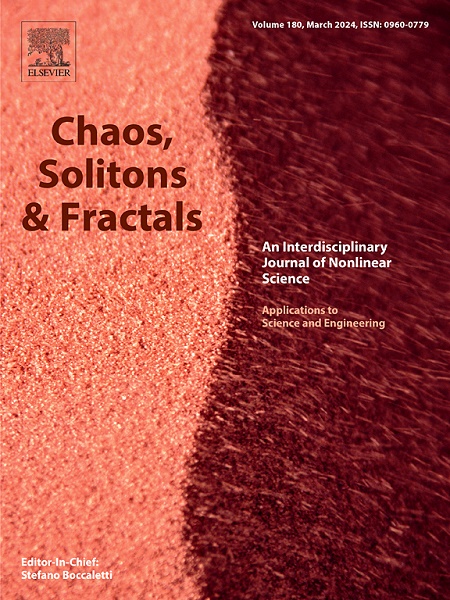Higher-charged binary vortex quantum droplets in a ring potential
IF 5.3
1区 数学
Q1 MATHEMATICS, INTERDISCIPLINARY APPLICATIONS
引用次数: 0
Abstract
We investigate the stability and characteristics of vortex quantum droplets (QDs) with particle imbalance and different topological charges in two components formed by binary Bose–Einstein condensates trapped in a ring potential. Two types of binary vortex QDs including semi-vortex (SV) and mixed-vortex (MV) QDs can be stable up to at least with the help of the ring potential. It is worth noting that, for a given number of particles in the binary vortex QDs, the more particles are concentrated in the zero-vorticity and lower-vorticity components for stable SV and MV QDs, respectively, and the imbalanced degree is further increased with the growth of topological charge . We found that the relative norm (scaled number of particles) distribution of two components in imbalanced SV and MV QDs with high topological charge can be controlled by adjusting the ring potential radius, width, and depth. In addition, it is revealed that stable binary vortex QDs in the ring potential can violate the Vakhitov-Kolokolov criterion. Effects of the topological charges and the ring potential parameters on the chemical potential and the peak density of the SV and MV QDs are systematically studied. The stability areas of the SV and MV QDs with different topological charges in the plane of the total norm and coupling constant are also identified. The results may be relevant to design an encoding device employing binary vortex QDs with different topological charges for storing different data components.
环势中的高电荷双涡旋量子液滴
本文研究了由二元玻色-爱因斯坦凝聚体捕获在环势中形成的两组分中具有粒子不平衡和不同拓扑电荷S±的涡旋量子液滴的稳定性和特性。在环势的作用下,半涡(SV)和混合涡(MV)两种二元涡旋量子点可以稳定在S−=14以上。值得注意的是,对于双涡量子点中一定数量的粒子,稳定的SV和MV量子点中分别有更多的粒子集中在零涡度和低涡度分量,并且随着拓扑电荷S−的增加,不平衡程度进一步增加。我们发现,在高拓扑电荷的不平衡SV和MV量子点中,两组分的相对范数(标度粒子数)分布可以通过调节环势半径、宽度和深度来控制。此外,还揭示了环势中稳定的二元涡旋量子点可以违反Vakhitov-Kolokolov判据。系统地研究了拓扑电荷S±和环势参数对SV和MV量子点化学势和峰密度的影响。在总范数和耦合常数平面上,确定了不同拓扑电荷的SV和MV量子点的稳定区域。研究结果可能与设计一种利用具有不同拓扑电荷的二元涡旋量子点来存储不同数据分量的编码装置有关。
本文章由计算机程序翻译,如有差异,请以英文原文为准。
求助全文
约1分钟内获得全文
求助全文
来源期刊

Chaos Solitons & Fractals
物理-数学跨学科应用
CiteScore
13.20
自引率
10.30%
发文量
1087
审稿时长
9 months
期刊介绍:
Chaos, Solitons & Fractals strives to establish itself as a premier journal in the interdisciplinary realm of Nonlinear Science, Non-equilibrium, and Complex Phenomena. It welcomes submissions covering a broad spectrum of topics within this field, including dynamics, non-equilibrium processes in physics, chemistry, and geophysics, complex matter and networks, mathematical models, computational biology, applications to quantum and mesoscopic phenomena, fluctuations and random processes, self-organization, and social phenomena.
 求助内容:
求助内容: 应助结果提醒方式:
应助结果提醒方式:


